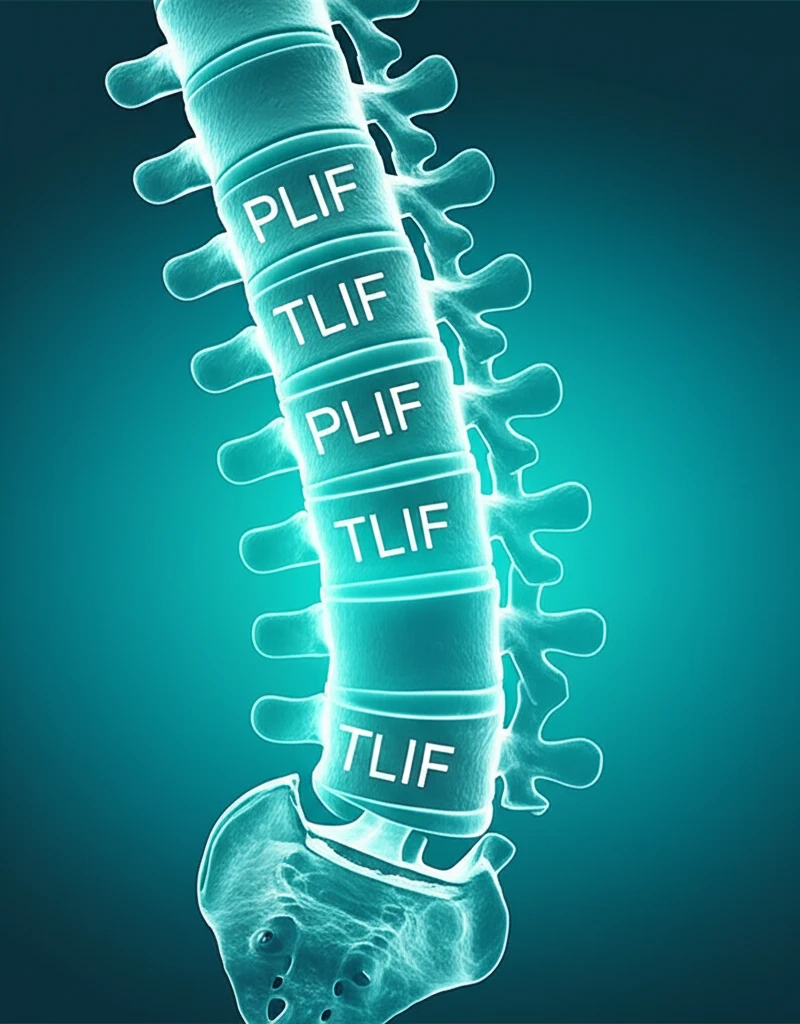
PLIF vs. TLIF: Choosing the Right Spinal Fusion for Your Back Pain
"A Comprehensive Guide to Posterior Lumbar Interbody Fusion (PLIF) and Transforaminal Lumbar Interbody Fusion (TLIF) Techniques"
Chronic back pain can significantly impact your quality of life, limiting your ability to work, enjoy hobbies, and even perform simple daily tasks. When conservative treatments like physical therapy and pain medication fail to provide relief, spinal fusion surgery may be considered. Posterior Lumbar Interbody Fusion (PLIF) and Transforaminal Lumbar Interbody Fusion (TLIF) are two common surgical techniques used to address back pain and spinal instability.
Both PLIF and TLIF aim to stabilize the spine by fusing together two or more vertebrae. This eliminates motion between the vertebrae, which can reduce pain and improve function. However, the two procedures differ in their approach to accessing the spine and the placement of the interbody graft, which is used to promote fusion.
This article will provide a comprehensive overview of PLIF and TLIF, outlining the key differences between the two techniques, their respective advantages and disadvantages, and what to expect during and after surgery. Understanding these nuances can empower you to have a more informed discussion with your surgeon and make the best decision for your individual needs.
PLIF: Direct Decompression and Bilateral Fusion

Posterior Lumbar Interbody Fusion (PLIF) is a surgical technique that involves accessing the spine through an incision in the back. The procedure aims to achieve direct decompression of the neural elements and interbody fusion through the same incision, providing pain relief and spinal stability.
- Surgical Approach: PLIF utilizes a midline incision in the back to access the spine.
- Decompression: Direct decompression of the neural elements is achieved through the posterior approach.
- Interbody Fusion: The interbody fusion is performed by inserting bone graft or cages into the disc space after removing the disc material.
- Nerve Root Retraction: PLIF typically requires bilateral retraction of the nerve roots to access the disc space.
- Graft Placement: Two cages are typically inserted.
Making an Informed Decision About Spinal Fusion
Choosing between PLIF and TLIF depends on your specific condition, anatomy, and the surgeon's expertise. Discuss your options thoroughly with your doctor to determine the most suitable approach for your back pain and spinal stability. Each technique has its own advantages, and the best choice depends on individual patient factors.
